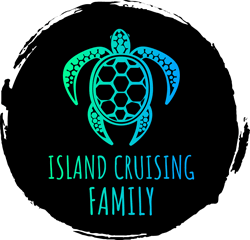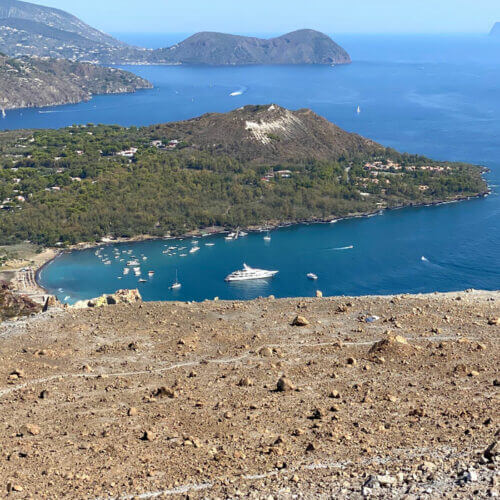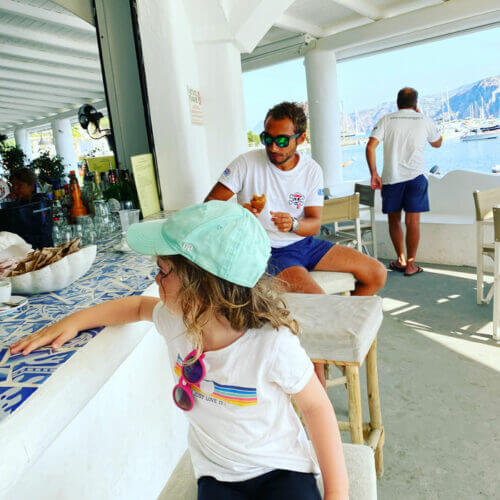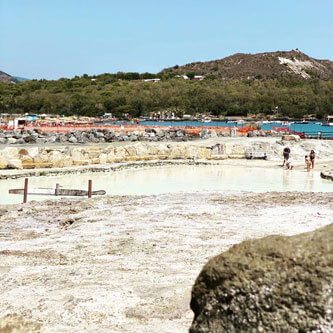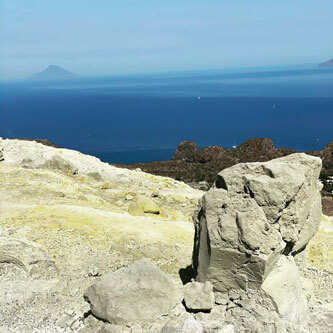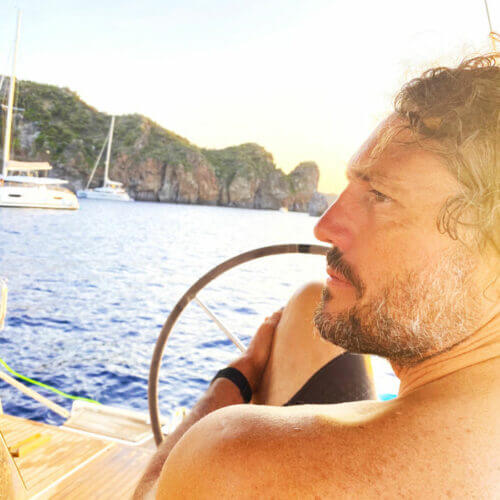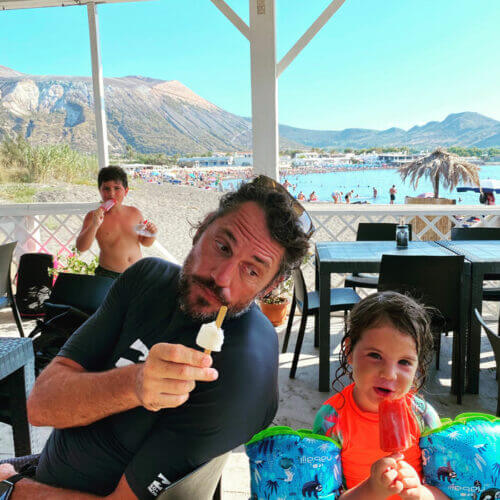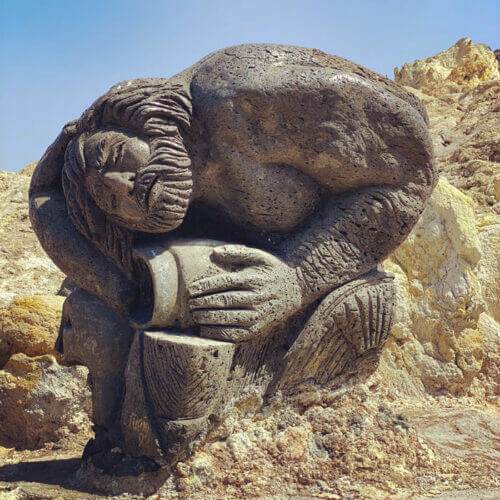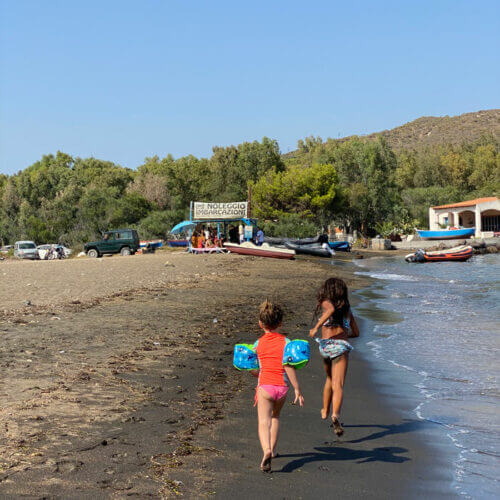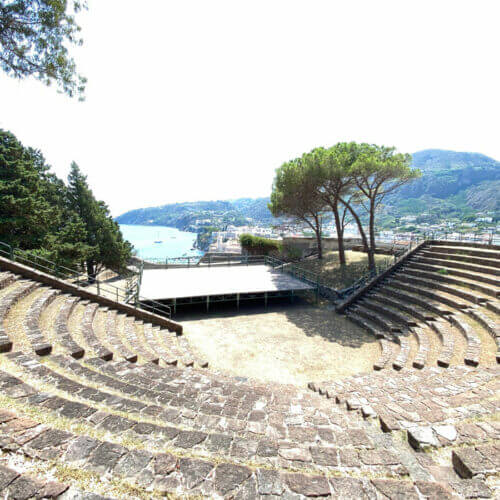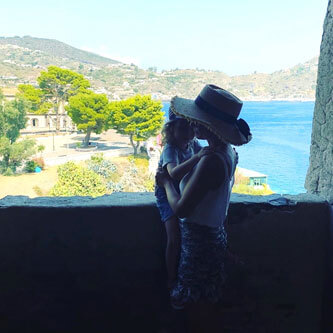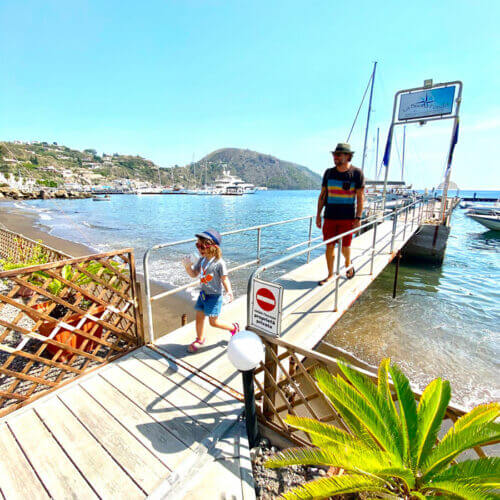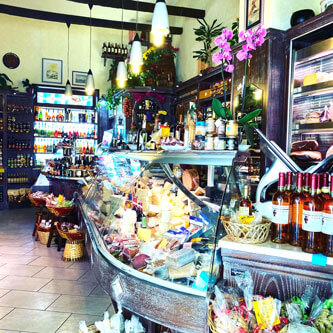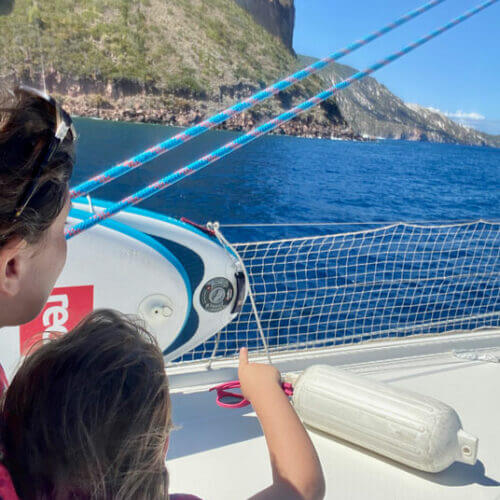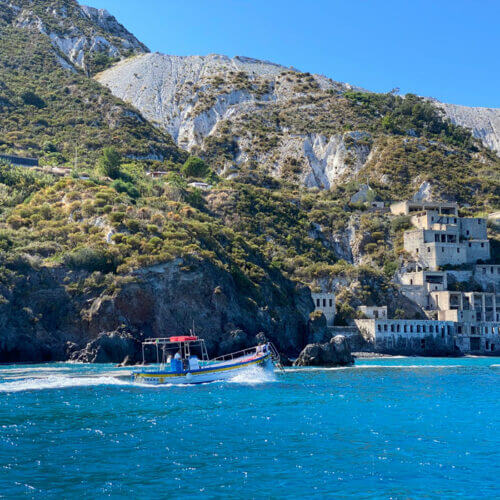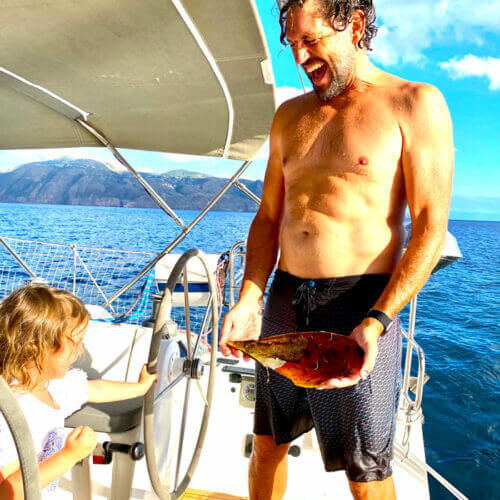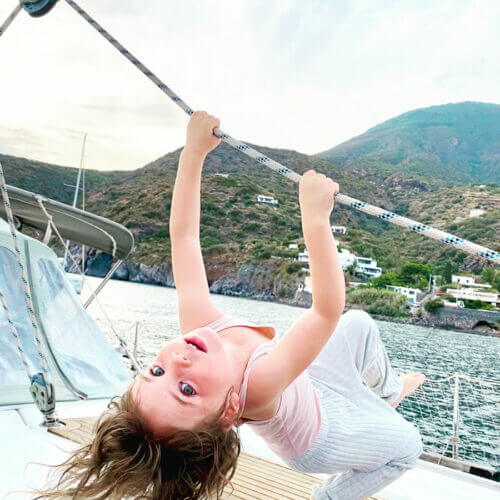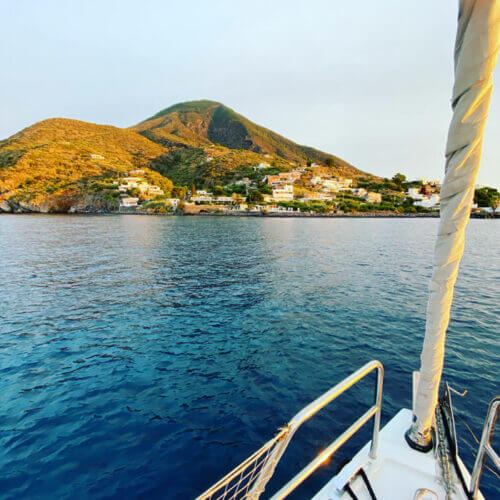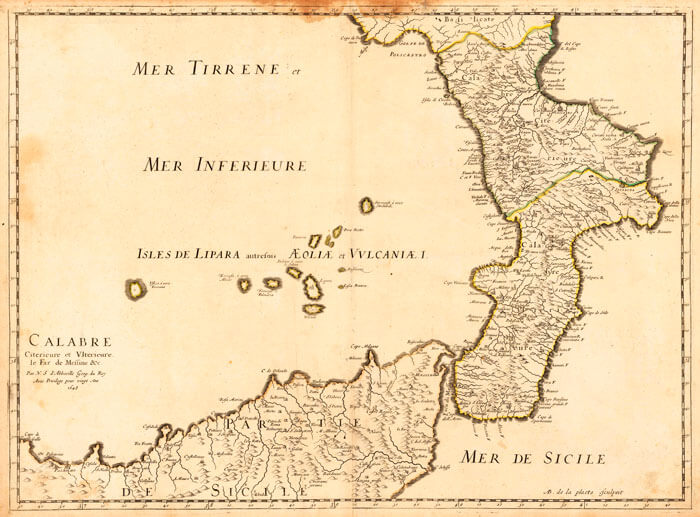
Although you may have never heard of the enchanting name of Aeolian Islands, you certainly know about the famous Stromboli, the most impetuous volcano of this little Archipelago through. Stromboli is not a single lost volcanic island facing the Italian coast, it has 6 exotic brothers and sisters among which the sulfuric Vulcano. Cobalt to Turquoise blue sea, steaming volcanoes and mountains, remote islands… we heard that the Aeolians were the European Holy Grail for island lovers, and we understand why!
The 7 islands are the pinnacle of a 3000m-high volcanic outcrop formed a million years ago, just 14 nautical miles off the coast of Sicily.
Their names are Lipari, Vulcano, Salina, Panarea, Stromboli, Filicudi and Alicudi are separated by waters over 200m in depth. They appear never to have been connected to the island of Sicily! There are additionally five small islets and Rocks welcoming you as mystical sea totems at times.
As it is always are preference, we headed first to one the active volcano, cape to Vulcano. Coming from the Ionian Sea and the Messina Strait, we were enchanted to discover its typical Mediterranean vegetation with number of endemic plants and reptiles. The marine life is abundant (Vulcano and all the islands except Lipari are either completely or partially designated nature reserves).
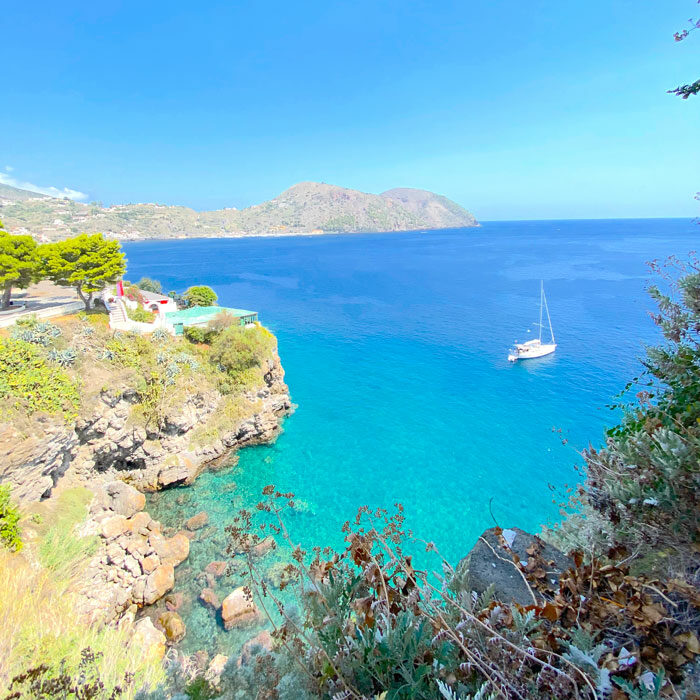
VULCANO
Vulcano is famous for its volcanic activity on the slopes of the mountain and as well in the sea! Next to the eastern port, there is a vast area of sea in activity with fumaroles which make the water boil in several places and also a famous bubbling mud pit. Different pathologies can be treated by the sea issuing volcanic gases (that make the sea water always hot). The thermal pools’ structure was closed for restoration in summer 2020 but it’s usually the ‘hot spot’ of Vulcano.
However curative virtues sulphur may have, beware of an excessive sulfuric fumaroles exposition as they can cause headaches. It came for me on the third day, maybe this was too much sun / dehydration as well, but it made it difficult to stand the constant rotten egg smell while mooring nearby the Port. The western mooring was easier in that respect. Also, it’s advisable to remove all your jewellery when going around as the sulphur damages badly the metal irreversibly, I made a necklace donation to Vulcano forgetting this.
The most famous beach, the “Sabbie Nere” (black sand) makes the island unique. Our young girl had the best time there running along with local kids, catching crabs and make them foam before releasing them.
Having lunch in a local restaurant nearby the beach, we keep in mind the great Aeolian style salads (simple and perfect lettuce, tomatoes, capers, red onions and olive oil). Actually, very tasty vegetables are grown on the island. The volcanic fertile soil may be the reason.
Depart at sunrise to climb the mountain and reach the crater at 390 metres above sea level. Summer there is dead hot, so better leave early. The panorama and view on your boat (if you came by the sea) is fantastic.
The island offers several moorings depending on the wind orientation and even a small pontoon if berthing was necessary. We enjoyed anchoring in Vulcano despite the number of vessels piling up in the bay for shelter at sunset (Check that no one drops its anchor on the top of yours.
LIPARI
Being close-by Vulcano it was our second destination as it offers a great number of services, several marinas and we enjoyed mooring in Marina Lunga during strong winds days. Doing so, we could make the local visits, streets, castle, museum while recovering on some laundry
and well-needed shopping. Lipari is in fact the very heart of the archipelago, the largest island and also the transport hub of the Aeolian Archipelago, from which tourists reach and visit the other islands by public transportation (hydrofoils and ferries).
The Aeolian Museum is located on the top of the majestic rock of the Castello, an imposing volcanic formation. Thanks to its position, the Castello (castle) was an important natural stronghold where its inhabitants settled to find refugee from the violent barbarian
incursions. The full name is Regional Aeolian Archeological Museum ‘Luigi Bernabò Brea’, but it was also founded by a woman Madeline Cavalier who was the initiator of the important 50’s digs… still it seems her name was not as valuable as her male partner. This is more than just a museum but well a complete archaeological site with the ancient Necropolis of which you can discover the layers, and an amphitheatre. Don’t rush the visit if you want to get the most of it.
The ancient city centre of Lipari, and it is surrounded by the high XVIth century walls. All talks history, volcanology but also gastronomy. For the seafood experience, we recommend the ‘Ristorante da Filippino a Lipari’ on the Piazza Municipio, probably the best in the Aeolian islands. The service is outstanding. An excellent Italian culinary experience, in a vintage veranda overlooking the square to treat you after long hours of city exploration.
You’ll find the clearest waters nearby the beach of Porticello. On our way to the North in direction to Acquacalda, we discovered Porticello waters and just had to drop the anchor: diving into this unbelievable crystal-clear water is irresistible!
Most beaches are armoured with pebbles or small to medium sized cobbles. The pebble beach of Porticello is notable for its content of pumice. Pumice mining was part of the local economy until 2000. Until this day, the old boarding bridges used to freight the pumice directly on the ships remains.
Other places like the village of Canneto, Spiagga Bianca and Capobianco deserve a visit. In August 2020, we witnessed a wildfire which burned the West side of the island for long hours. The ablaze night sky was somewhat unreal with reddish colours until the fire came
under control the next day.
SALINA
Salina is the second largest island and the greenest. Mooring at its feet offers a beautiful scenery at sunset, especially with a full moon rising over Lipari, a cherished memory.
Salina offers six volcanoes, ancient and flat ones like Capo Pizzo del Corvo and M.Rivi, and the layered volcanoes of the Fossa delle Felci and Porri mounts still have a perfect conical shape. It is famous for its Natural Reserve which covers half of its surface. There are some
nice cliffs and rocky coast to SUP around and beaches are mainly cobbles.
If you want a sand beach, the only one is Rinella beach: very small and full of tourists in high season as this is the second port of the isle for hydrofoils and ferries. Santa Marina, which is also the main port of the island, has bars, restaurants, and a moderate nightlife.
This is the place we found a Pinna Nobolis shell, which is a large family species of Mediterranean clam. In the past 10 years, the population reduced by 80%. In the past the main threats were fishing, diminution of sea grass fields and pollution. But since 2016, a new pathogen increased the mortality of the population of Pinna Nobolis. It is
now listed as a critically endangered species in the Med Sea. No need to say that all forms of capture and killing are strictly forbidden.
PANAREA
Panarea, the smallest Aeolian island and the most ‘select’. Pre-covid times, the island was known for its summer parties organised everyday and many yachts anchored there. There are no beaches, except for the Zimmari bay at less than 1 mile from the little town. Like Stromboli, Panarea is quite far from the other islands. But if you want some society life and enjoy the many inlets’ creeks and little beaches this is the place. The sea is also full of different species of fish and popular with those who love fishing.
In under coastal fishing (-20/25m), the most spread species are represented by cuttlefishes, squids and octopus which outstanding size. The species supposedly easy to be found ( we are not great fishers) are groupers, barracudas, morays, breams, saddled breams, forkbeards and turbots. A particular point needs to be done for red squids caught by the local fishermen: it is not rate that these red squids exceed 10 kilos and 1 meter of length.
STROMBOLI
Stromboli one of the most active volcanoes on earth black sand beaches and rocks. Not to be missed therefore is an excursion to the central crater accompanied by an official guide due to its continual eruptive activity is highly recommended. However, spotting the eruptions from the sea is our preferred option since a guide and its client perished during an eruptive event around 2018.
The explosive activity can be better watched in the evening from the deck of your yacht. This spectacular show is unique watching the flows of red lava going down towards the sea interrupted sometimes by explosive phases of magma and lapilli from the central crater.
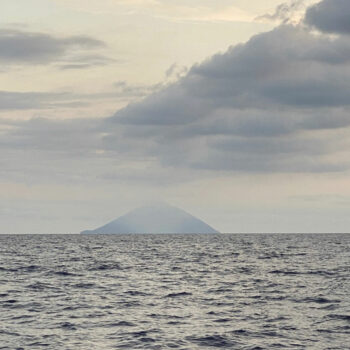
FILCUDI AND ALICUDI
These are the two wild and solitary islands with indented coastlines and almost no beaches. There are deep caves to be explored, the most famous being Bue Marino. Only a boat will let you enjoy the magic of Filicudi, which has no beach but yet is known to offer the best coasts and underwater scenes of the whole archipelago.
Alicudi’s is an unspoiled nature for cruisers. Except from the port, a food shop, a hotel and a little bar, you’ll find only hill slopes and their terraces, high coastline with black rocks, valleys and cliff faces.
Our Tips
